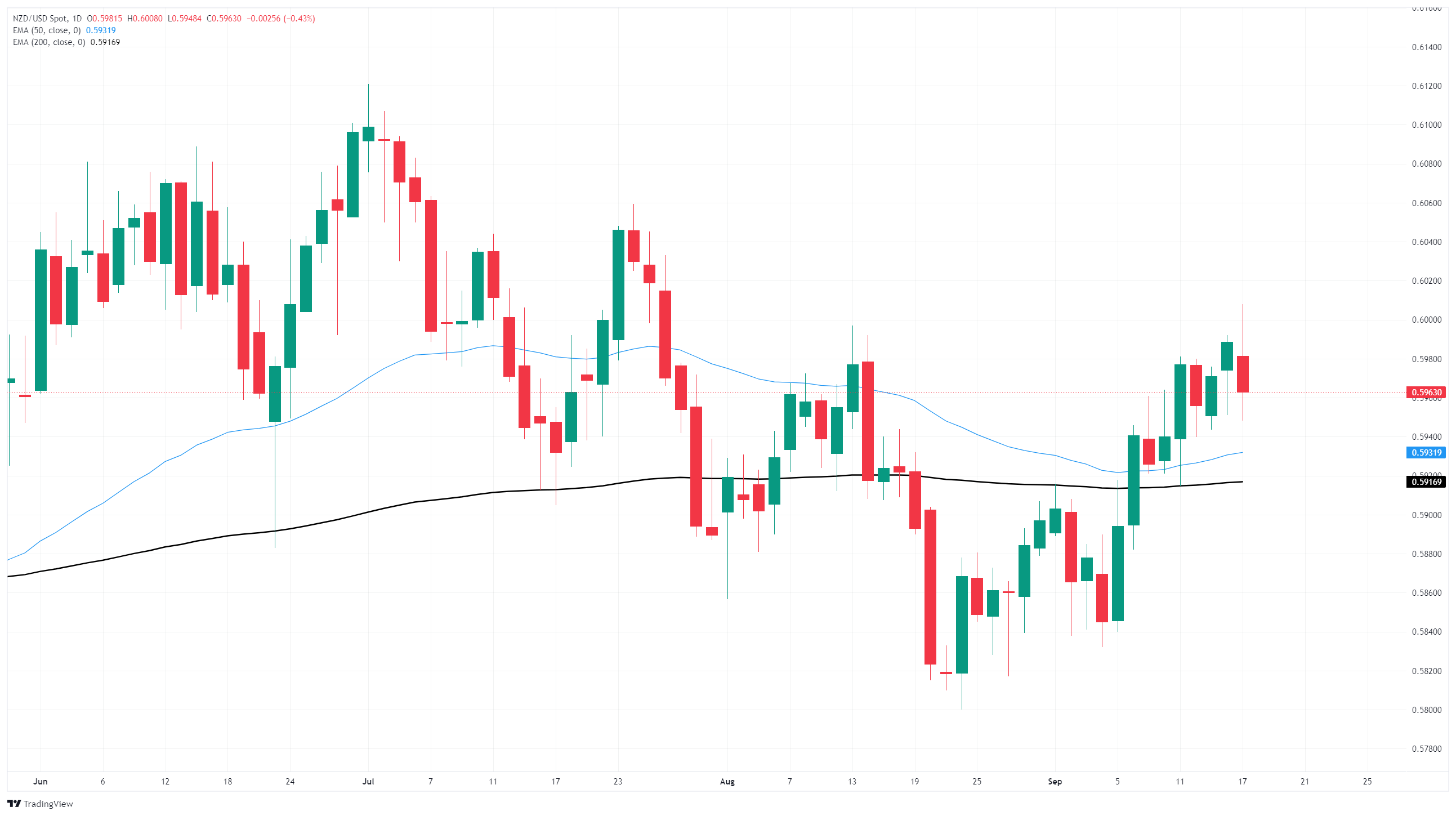When is the New Zealand GDP, and how could it impact NZD/USD?
NZ GDP Overview
The latest quarterly Gross Domestic Product (GDP) growth figures from New Zealand are expected just ahead of the Thursday market rollover, at 22:45 GMT on Wednesday.
NZ GDP has struggled to impress markets recently, and the second quarter of 2025 is not expected to deliver much different. QoQ growth is expected to contract by 0.3%, while annualized growth is seen at a flat 0.0%, barely clawing back from a -0.7% contraction in the first quarter.
How could it impact NZD/USD?
It will take a significant swing in either direction to push the Kiwi into a fresh momentum swing. Markets are spent on volatility after the Federal Reserve (Fed) cautiously trimmed interest rates for the first time in almost ten months, and there are little surprises on offer from middling Antipodean growth metrics.
NZD/USD broke out of a messy descending channel on daily candlesticks, but the 0.6000 level remains a tricky barrier for price action to vault over, and bullish momentum is likely to remain capped as bids wrestle to stay above the 200-day Exponential Moving Average (EMA) near 0.5933.
NZD/USD daily chart

Economic Indicator
Gross Domestic Product (QoQ)
The Gross Domestic Product (GDP), released by Statistics New Zealand on a quarterly basis, is a measure of the total value of all goods and services produced in New Zealand during a given period. The GDP is considered as the main measure of New Zealand’s economic activity. The QoQ reading compares economic activity in the reference quarter to the previous quarter. Generally, a high reading is seen as bullish for the New Zealand Dollar (NZD), while a low reading is seen as bearish.
Read more.Next release: Wed Sep 17, 2025 22:45
Frequency: Quarterly
Consensus: -0.3%
Previous: 0.8%
Source: Stats NZ
The Gross Domestic Product (GDP), released by Statistics New Zealand, highlights the overall economic performance on a quarterly basis. The gauge has a significant influence on the Reserve Bank of New Zealand’s (RBNZ) monetary policy decision, in turn affecting the New Zealand dollar. A rise in the GDP rate signifies improvement in the economic conditions, which calls for tighter monetary policy, while a drop suggests deterioration in the activity. An above-forecast GDP reading is seen as NZD bullish.

